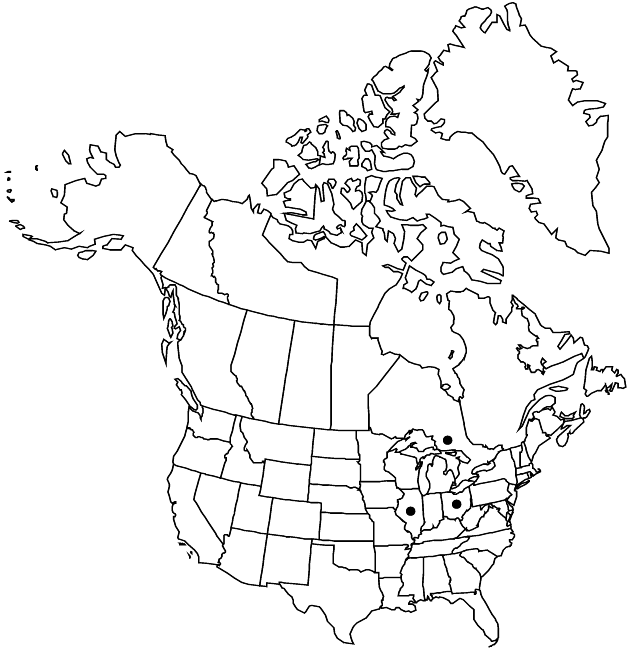Tetraneuris herbacea
Pittonia 3: 268. 1898.
Perennials, 6–35+ cm. Caudices ± branched, branches notably thickened distally. Stems 1–10, erect, unbranched. Leaves all basal, new leaves tightly clustered; blades spatulate or oblanceolate to linear-oblanceolate, entire, glabrous or sparsely to rarely moderately hairy, moderately to densely glanddotted. Heads 1–10 per plant, borne singly. Peduncles 5–35 cm, ± hairy proximally, densely hairy distally. Involucres 10–15 × 12–20 mm. Outer phyllaries 8–12, 5–7.5 mm, margins 0–0.2 mm wide, sometimes slightly scarious, abaxial faces ± hairy. Ray-florets 14–27; corollas 11.8–20 mm. Disc-florets 50–100+; corollas yellow, 3.4–4 mm. Cypselae 2.4–3.4 mm; pappi of 4–7 obovate, usually non-aristate scales 1.9–2.2 mm. 2n = 28.
Phenology: Flowering (Apr–)May–Jun(–Oct).
Habitat: Alvars (limestone flats), openings in woods
Elevation: 200 m
Distribution

Ont., Ill., Ohio.
Discussion
Tetraneuris herbacea is in the Center for Plant Conservation’s National Collection of Endangered Plants.
Selected References
None.